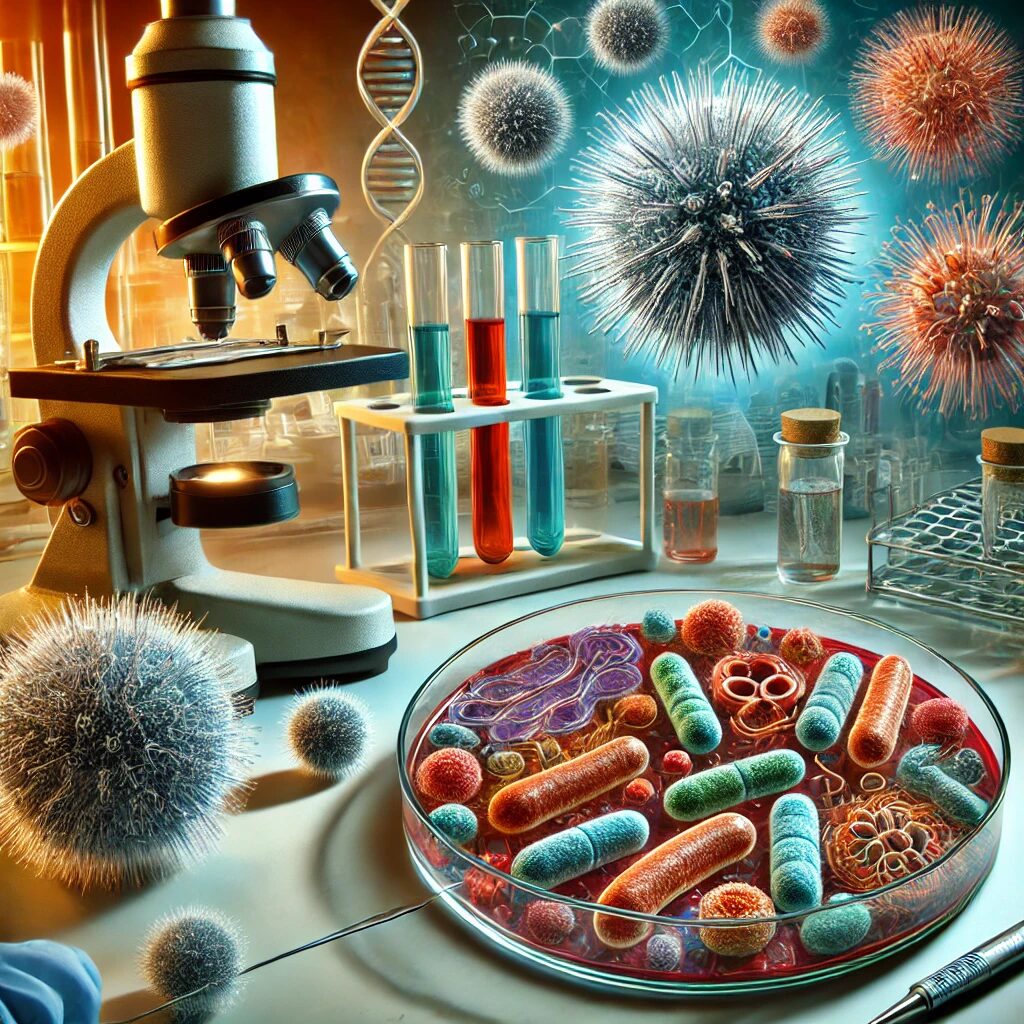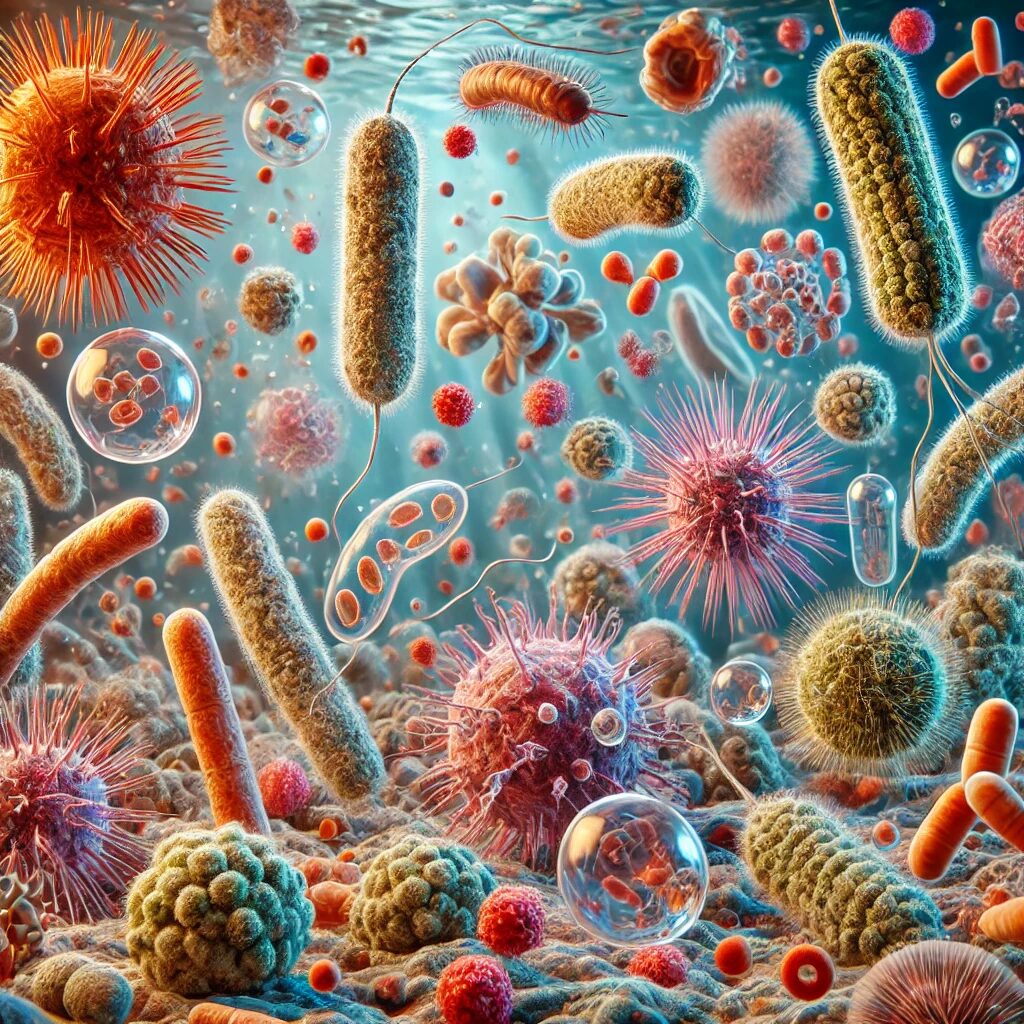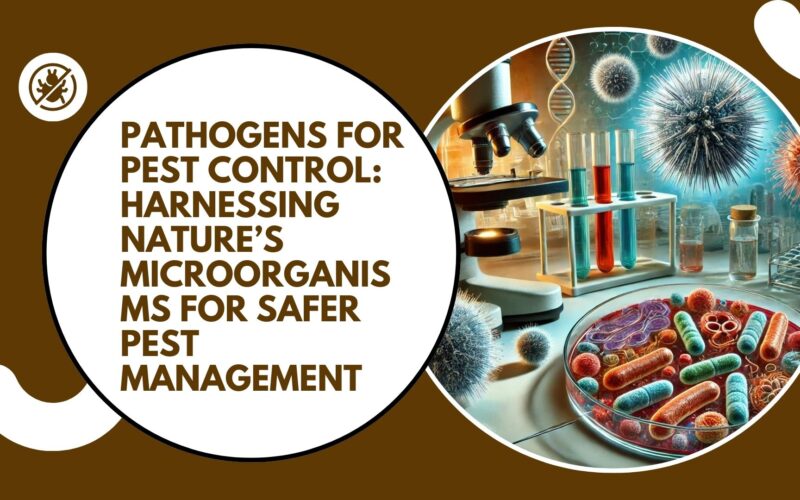
Pathogens for pest control are transforming the way we manage agricultural and garden pests by using natural microorganisms to control populations safely and effectively.
Unlike chemical pesticides, which can harm beneficial species and degrade ecosystems, pathogens target specific pests, leaving non-target organisms and the surrounding environment unharmed.
This guide explores the types of pathogens used in pest control, their mechanisms, and the advantages of using them for environmentally friendly pest management.
Why Use Pathogens for Pest Control?
Using pathogens for pest control aligns with sustainable agricultural practices and integrated pest management (IPM) approaches, which aim to reduce chemical dependency while effectively managing pest populations.
Pathogens offer highly targeted solutions, meaning that they attack only the pest species without affecting beneficial organisms like pollinators.
This specificity makes pathogens ideal for use in organic farming, where maintaining ecological balance is a priority.
The long-term presence of these pathogens in ecosystems provides ongoing pest suppression without the need for repeated chemical treatments.
Types of Pathogens for Pest Control and Their Mechanisms

Fungi: Effective Pathogens for Pest Control
Fungal pathogens are commonly used pathogens for pest control because they are naturally occurring, effective against various insect pests, and easy to apply. Fungi infect pests through their outer layers, eventually causing death.
Beauveria bassiana: This fungus targets soft-bodied insects like aphids, thrips, and whiteflies. Once it contacts the insect, it penetrates the exoskeleton and grows internally, killing the pest within a few days. It’s a popular choice for organic farmers needing environmentally safe pest control.
Metarhizium anisopliae: Known for its effectiveness against soil-dwelling pests such as termites, beetle larvae, and locusts, Metarhizium anisopliae can be applied directly to soil. This fungus is ideal for pests that spend part of their lifecycle underground, where chemical pesticides are less effective.
Bacteria: Commonly Used Pathogens for Pest Control
Bacterial pathogens are among the most widely used pathogens for pest control, with Bacillus species being the most notable. These bacteria produce toxins that specifically target the gut cells of pests, making them lethal to insects without affecting other organisms.
Bacillus thuringiensis (Bt): Bt is one of the most widely applied pathogens for pest control in organic farming. Its different strains are effective against caterpillars, beetles, and mosquito larvae. When pests ingest Bt spores, the toxin disrupts their digestive system, leading to death. Bt is safe for non-target organisms, making it a trusted option for organic pest control.
Bacillus sphaericus: This bacterium is used primarily for controlling mosquito larvae in stagnant water bodies. It is specific to mosquito larvae and leaves other aquatic life unharmed, making it an eco-friendly choice for pest control in water sources near human populations.
Viruses: Viral Pathogens for Pest Control
Viral pathogens are another group of effective pathogens for pest control that target specific insect groups. They infect pests through ingestion, taking over the host’s cells and leading to death.
Nucleopolyhedrovirus (NPV): NPVs are commonly used to control caterpillar pests, such as armyworms. When caterpillars consume the virus, it replicates within their cells, disrupting vital functions. NPVs are used widely in agriculture for their effectiveness and specificity to certain pests.
Granulovirus (GV): GVs target beetle larvae, especially in fruit orchards where codling moths are prevalent. As highly specific pathogens for pest control, GVs allow orchard owners to manage pests without impacting other species, maintaining a balanced ecosystem.
Nematodes: Microscopic Pathogens for Pest Control
Nematodes are microscopic, worm-like organisms that act as effective pathogens for pest control, especially for soil-dwelling pests. They enter pest larvae through natural openings and release bacteria that kill the host quickly.
Steinernema and Heterorhabditis spp.: These nematodes are applied to soil and effectively manage pests like grubs, weevils, and caterpillars. As they kill pests quickly, they are particularly useful for crops and gardens, providing rapid relief from damaging insect populations.
Advantages of Using Pathogens for Pest Control
Pathogens for pest control offer several advantages that make them attractive options for environmentally conscious pest management. These pathogens specifically target pest organisms without harming beneficial insects like bees and butterflies, thus preserving biodiversity.
Unlike chemical pesticides, they do not leave toxic residues, making them safe for crops, water sources, and surrounding wildlife.
Certain pathogens can establish in the environment and persist over time, providing ongoing pest control without the need for frequent reapplication.
Disadvantages of Using Pathogens for Pest Control
While pathogens for pest control offer many benefits, they also come with certain disadvantages that may limit their effectiveness or ease of use in some situations.
Environmental Sensitivity: The effectiveness of pathogens can vary depending on environmental conditions such as temperature, humidity, and sunlight. Fungi and viruses, in particular, may struggle in adverse weather conditions, reducing their control over pest populations.
High Cost and Limited Availability: Mass production and application of certain pathogens, especially specific viruses and nematodes, can be expensive. Although prices are decreasing as biotechnology advances, the cost can still be prohibitive for small-scale farmers.
Slower Action Compared to Chemicals: Unlike chemical pesticides, which can act immediately, pathogens for pest control often take longer to affect pest populations. The process of infection and pest mortality can take days to weeks, which may not suit situations requiring rapid pest suppression.
Risk of Resistance Development: Pests exposed repeatedly to the same pathogens may develop resistance over time, reducing effectiveness. To mitigate this, pathogens are best used as part of an integrated pest management (IPM) strategy, combining biological control with other methods.
Limited Spectrum: Most pathogens for pest control are highly specific to certain pest species, which, while beneficial for biodiversity, means they are not suitable for controlling multiple pest types simultaneously. This specificity may require farmers to use different pathogens or methods to manage diverse pest populations.
Challenges in Using Pathogens for Pest Control
While pathogens for pest control are effective, their use does come with certain challenges. Environmental conditions, such as temperature and humidity, can affect the efficacy of some pathogens, requiring careful timing and management.
The cost of mass-producing certain pathogens can be higher than conventional pesticides, though advances in biotechnology are gradually making pathogens more affordable.
There is also a risk of pests developing resistance over time, so it is essential to integrate pathogens with other pest management practices to maintain their effectiveness.
Best Practices for Applying Pathogens for Pest Control
Successful application of pathogens for pest control requires proper timing, correct application techniques, and regular monitoring. It is essential to apply these pathogens when pests are at specific life stages, as some pathogens are more effective on larvae than adult insects.
Monitoring pest populations helps determine the best times to apply pathogens, ensuring that applications are well-targeted. By following these best practices, pathogens can be used more efficiently and sustainably, achieving the best results in pest control.
Conclusion
Pathogens for pest control represent a sustainable, effective alternative to chemical pesticides, offering targeted pest management that aligns with environmentally friendly agricultural practices.
Farmers and gardeners can reduce reliance on chemical treatments, promoting healthier ecosystems and reducing harmful residues by integrating pathogens into broader pest management strategies.
Embracing these natural solutions for pest control not only helps manage pest populations effectively but also supports a balanced, sustainable approach to agriculture.
